Potato peelings as plant fertilizer
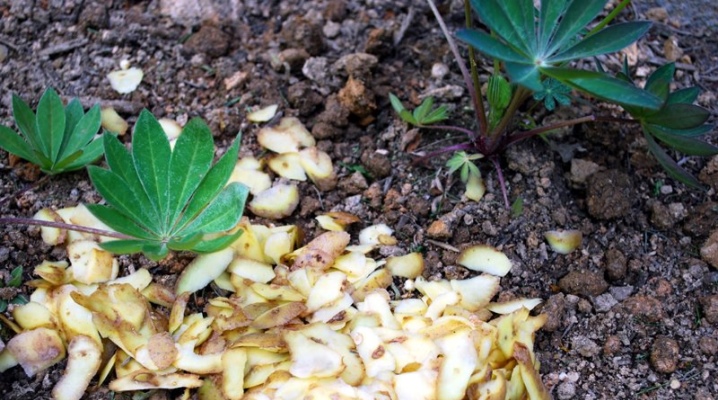
Ordinary potato peelings in the hands of an experienced gardener can be easily transformed into an effective organic fertilizer. With its help, you can not only significantly save on fertilizing, but also multiply the yield of crops grown. How can potato peelings be used to feed plants? How to harvest and store potato skins in order to use them as fertilizer in the future?
Properties
Potato peel contains a lot of useful substances - potassium, magnesium, zinc, fluorine, polysaccharides, phosphorus, fiber, manganese, mineral salts, starch and glucose. Decomposing in the soil, the purification enriches it with nitrogenous compounds necessary for the active growth of the green mass of plants and the development of their root system.
The decomposed potato peel improves the air and moisture permeability of the soil, increases the content of humus and nutrients in it.

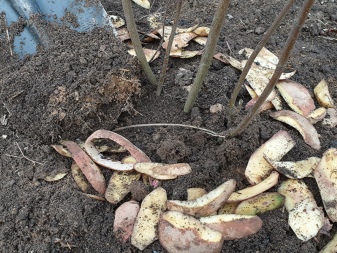
At the same time, cleaning, being an environmentally friendly food waste, does not pollute the soil, does not violate its chemical balance and acidity. In addition, the remnants of decomposed cleanings, penetrating deep into the soil layers with precipitation, do not pollute the groundwater.
Experienced gardeners claim that potato peelings, used as natural organic fertilizers, have a beneficial effect on plants at all stages of their development.... This safe and effective organic fertilization is beneficial for both young seedlings and mature plants. It not only helps to strengthen the root system and build up green mass, but also increases the yield of crops, accelerates the ripening of fruits.

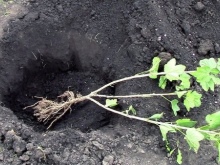
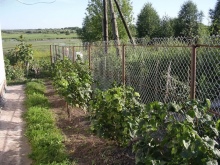
How to procure?
Experienced gardeners are usually engaged in harvesting cleanings all year round.
In spring and summer, potato skins are immediately sent to a compost pit, in winter and autumn they are processed (dried or frozen) and stored.
Both before drying and before freezing, the peel should be cleaned from dirt with a brush, rinsed thoroughly, dried on a sheet of paper, and then chopped with a sharp knife or passed through a meat grinder. Then the resulting mass must be spread out on a piece of clean gauze and squeezed well. During harvesting, it is recommended to discard potato skins left over from diseased, damaged, rotten or unripe tubers.... The use of such cleanings in the future can cause the development of severe and dangerous diseases in garden crops - rot, late blight.

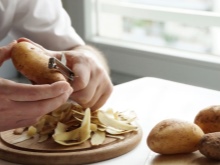
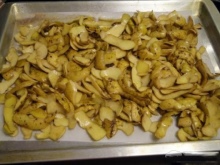
How to store
It is impossible to keep the cleaning fresh at home until the next summer season. When decomposing, they begin to grow moldy, emit an unpleasant smell of rot, which attracts midges and flies.
Cleanings that have obvious signs of decay cannot be used as organic plant nutrition.
To preserve the potato peel before the start of the summer season, gardeners use methods such as:
- drying;
- freezing.
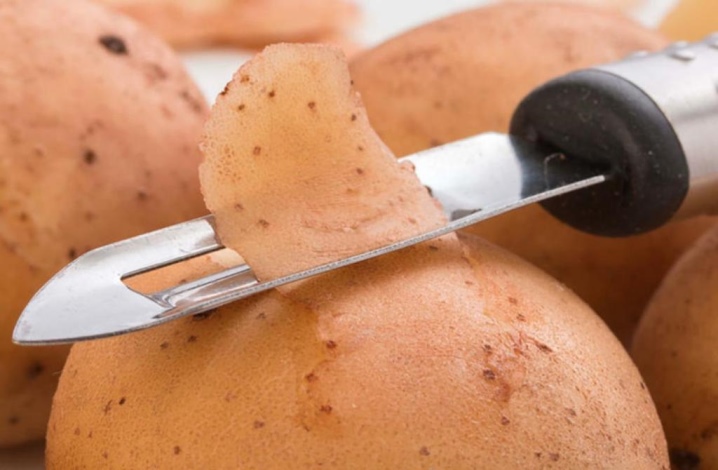
Drying cleanings
Drying is a reliable, albeit somewhat laborious, method that allows you to prepare and preserve potato peel before the dacha season. You can dry the cleaners on the battery by placing them in a clean gauze or cotton cloth bag. Drying potato skins on a battery usually takes several days. To prevent sweating under the influence of the heat of cleaning, it is recommended to ventilate the bag and its contents regularly.
You can dry the peelings in the oven by placing them in a thin and even layer on a baking sheet. During the drying process, potato peelings are periodically stirred so that their heat treatment occurs evenly.
Drying is recommended for 1.5-2.5 hours at a temperature of 130-140 ° C.
Many gardeners dry potato skins in dry and warm rooms, spreading them in thin layers on paper sheets. During the drying process, carefully monitor that the temperature in the room does not drop below + 22 ... +24 C °, and the humidity level does not rise above 30-35%.

Dried potato skins are stored in cotton or paper bags. It is not allowed to use airtight plastic bags. Store dried cleaners only in a dry, warm and well-ventilated room.
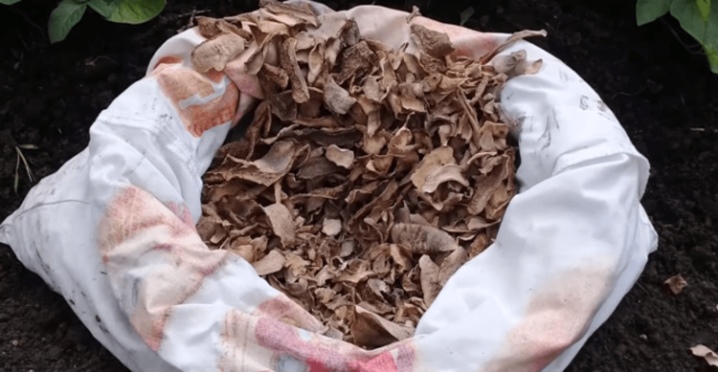
Freezing potato peels
Freezing is a simple, but not always affordable and acceptable way of storing potato skins. In frozen form, cleaning takes up a significant part of the freezer space, so this method of storing them is not suitable for everyone. Experienced gardeners recommend using cleaners for freezing, passed through a meat grinder or finely chopped with a knife... As such, they can be stored in the freezer by wrapping them in plastic bags.
In winter, it is allowed to store potato peelings on an unheated balcony (provided that the outside temperature is stable at -22 ... -25 ° C). During the warming period, the frozen cleanings are temporarily moved to the freezer.
It is important to consider that after defrosting, the potato peel must be used within the next 4-5 hours.
This requirement is due to the fact that defrosted cleaning under the influence of oxygen begins to deteriorate quickly.
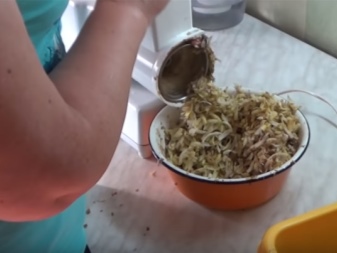
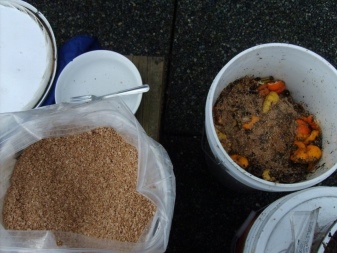
What plants are suitable for
It is recommended to use potato peel as an organic top dressing for such plant groups:
- some vegetable crops (cucumbers, zucchini, white cabbage and cauliflower);
- melons and gourds (pumpkins, melons, watermelons);
- fruit trees (apple, pear, plum, cherry);
- berry crops (currants, gooseberries, raspberries, wild strawberries, strawberries);
- ornamental shrubs and flowers.
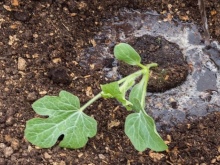

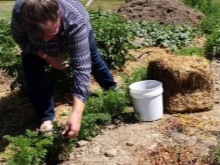
Experienced gardeners do not recommend using cleaning for feeding nightshade crops (tomatoes, peppers, potatoes). Observations show that the use of potato peel as an organic fertilizer does not have any effect on the plants of this group. Moreover, in case of improper heat treatment, colonies of pathogenic bacteria that cause diseases of nightshade crops can be preserved in the purifications.
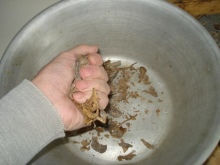
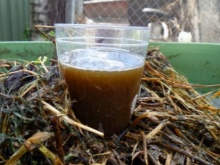
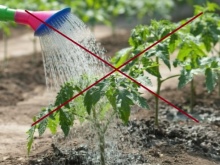
How to fertilize
To prepare organic feeding, you need to pour dried or thawed potato skins into a metal container (bucket or basin) and pour boiling water over it. After the water has cooled, the cleaning is removed from the container and laid out in the holes with the plants. The cooled water remaining in the container is used for watering garden plantations.
It is recommended to use this top dressing during planting of seedlings of cucumbers and cabbage.
In this case, gardeners step by step perform the following actions:
- equip ridges with planting holes in the garden;
- put a handful of steamed potato peels on the bottom of each hole and lightly sprinkle them with earth;
- seedlings are planted in holes with top dressing in the usual way;
- water the seedlings with settled warm water.
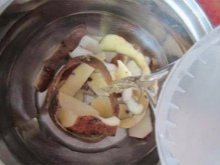
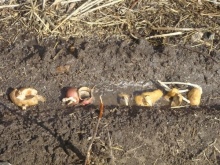
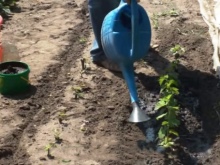
To feed the fruit trees in the garden, the steamed potato peel is dropped into the ground in the near-trunk circles (at a distance of 0.5-0.8 meters from the trunk). To feed one adult tree, 0.5-0.7 kilograms of cleaning is enough.
To feed black or red currants, you should spread the steamed cleanings in a thin layer around the base of each bush, and then sprinkle them with earth.This procedure is recommended to be carried out during the flowering period of the bushes (before the start of fruit formation). This will stimulate the mass formation of ovaries and, as a result, significantly increase the yield of berries.

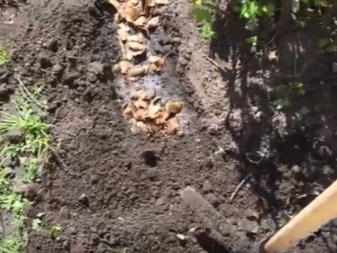
The video below describes how to use potato peelings for fertilization.













The comment was sent successfully.